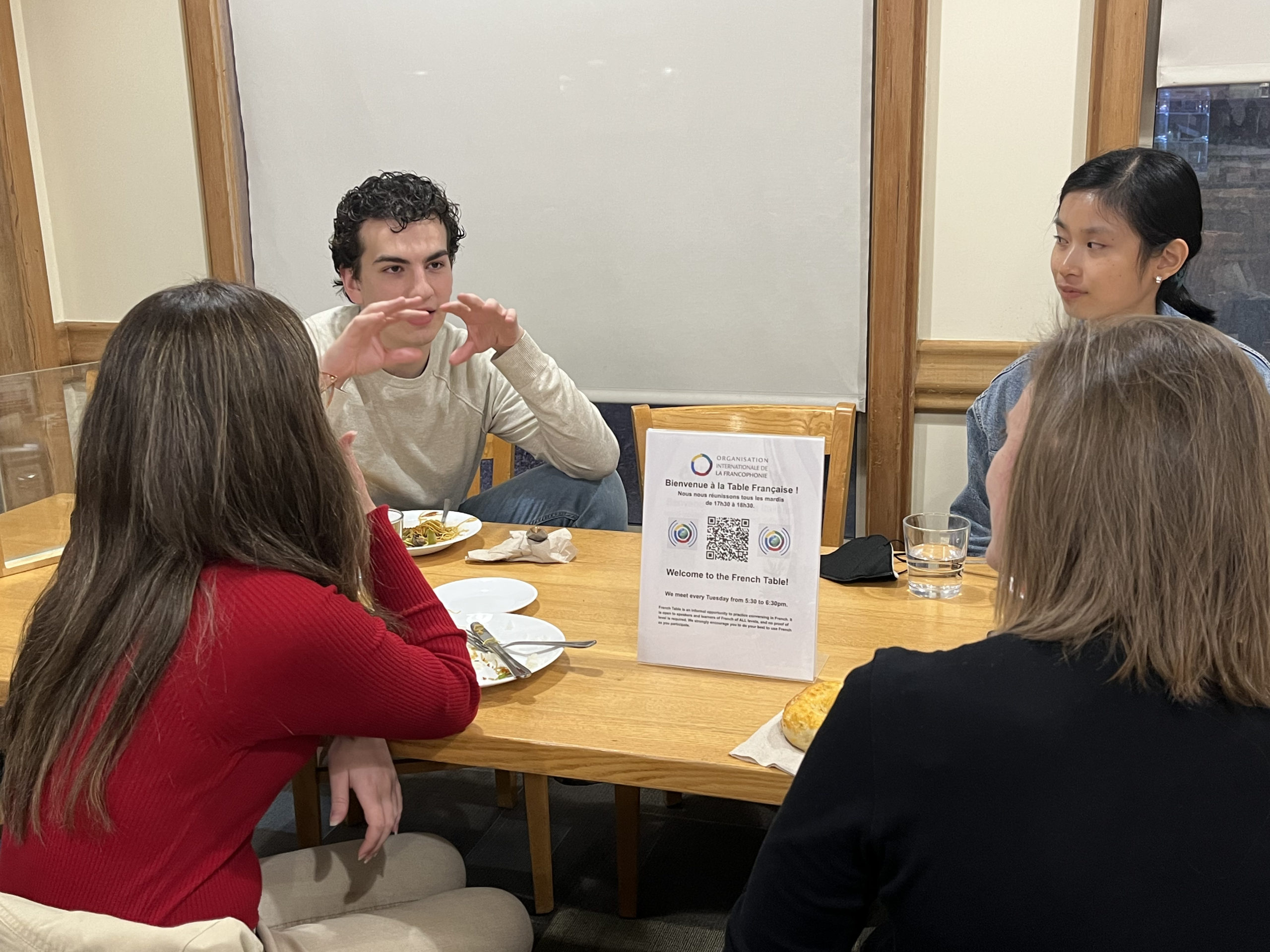Performances of Renaissance music can be heard from the common area of Stanford’s At Home Abroad (AHA) House during a Thursday evening seminar. Just half an hour ago, students sat at the Italian language table for a lively discussion with traditional food and dessert.
Located within Yost at Governor’s Corner, AHA is an intellectual and cultural crossroads where residents explore languages and cultures through a wide range of activities including seminars and lively discussions over dinner.
The University created AHA for the 2021-22 academic year as a combination of La Casa Italiana, La Maison Française (French House) and Slavianskii Dom. As the legacy of previous cultural themed houses, the AHA House continues to engage students in transcultural learning and foster a diverse community.
Cultural immersion
The AHA House hosts weekly Russian, Italian and French language tables where students converse in respective languages over dinner. The in-house meal plan allows for special cultural dinners targeted to the language that is being spoken at a table.
The purpose of the language tables is for people to practice languages while also enjoying food, according to AHA Affiliated Graduate Student Fellow Evan Alterman, who runs the Russian table. It is also a way “to forge a community” among students who are interested in Slavic, Francophone and Italian languages and cultures, Alterman added. “Everyone is welcome,” he said.
Alterman believes that language is one of the primary means by which people get to know others and their cultures. “It puts people in a totally different mindset and creates a sense of empathy, which is incredibly crucial for cementing our understanding of other cultures,” he said.
Besides the language tables, the AHA House hosts off-campus excursions, film screenings and resident-led activities. Associate Director for the Center for Russian, East European and Eurasian Studies and AHA Resident Fellow Jovana Lazić Knežević has taught students about critical issues and global affairs in classrooms settings, but she said that “something really special happens in spaces outside of the classroom” and outside of traditional academic environments.
The house also brings together students who are interested in foreign languages and cultures and international issues, according to Knežević. Rather than being a space solely for students who speak a foreign language or major in one, she said that AHA wants “a community of people who are curious about the world.”
Intellectual immersion
The house offers weekly seminars throughout the academic year that fall under the Division of Literatures, Cultures and Languages and Stanford Global Studies Division. While residents who applied to live in AHA before the general housing assignment process began are required to participate in the seminars, they are open to all interested undergraduate students.
During fall quarter, the seminar focused on international film series, and the winter quarter seminar centers around various art forms and other global media, genres and venues. Students await spring quarter’s multicultural cooking class.
“There’s a little bit less of a focus on learning literacy in different media in a traditional classroom,” said Maria Massucco, another AHA Affiliated Graduate Student Fellow and one of the instructors of the seminar. “Through the course, we offer students contact, exposure and practice opportunities to make sure that while they’re getting the well-rounded education at Stanford, they’re also considering the importance of multisensory literacy.”
Being able to read images, describe sounds and engage with the world in a tactile way are no less important than other factors in education, according to Massucco. “It’s a different kind of teaching from anything I’ve ever done,” she added.
While Nikhil Lyles ’24 did not initially sign up for the class, he was able to attend as a resident of the house — an experience that he said he enjoyed.
“The class is a great experience to be exposed to different cultures that I wouldn’t have heard about or been exposed to otherwise,” Lyles said.
Community
For True Sweetser ’21 M.A. ’22, being a Resident Assistant (RA) in Yost has been one of the best experiences he has had at Stanford. “The community here is not only solid, but lively, entertaining, close and supportive beyond my expectations,” Sweetser said.
Lyles also expressed appreciation for the diversity of the AHA community. He added that he enjoys the activities led by the RAs, weekly seminars and unique meals that he is able to enjoy with other residents. “There is always something to look forward to,” he said.
To Sweetser, the enthusiasm that a lot of students have for the AHA theme and for hanging out with one another in a house environment creates a sense of community.
“It’s been nice to see the confluence of the residents and their different backgrounds, ideas and interests come together,” he said.
